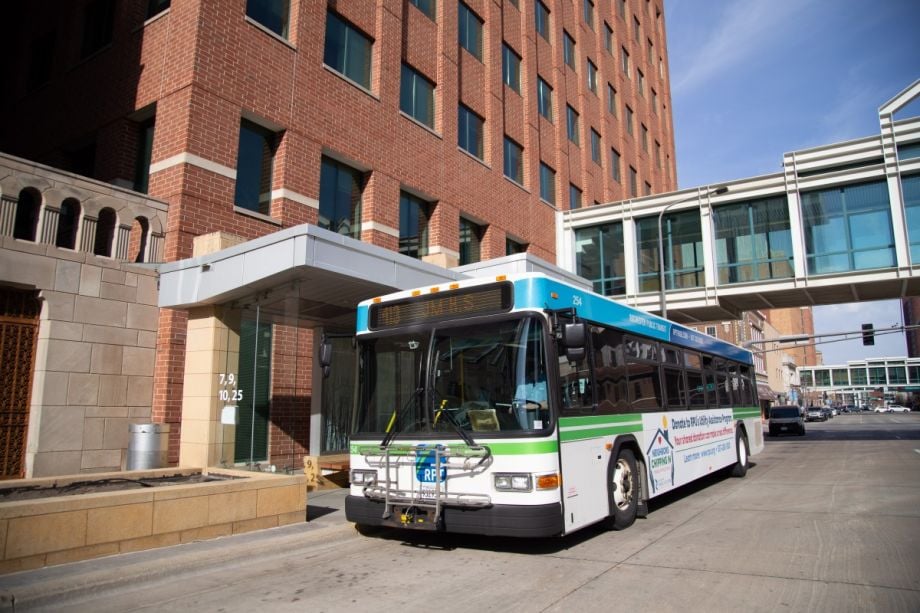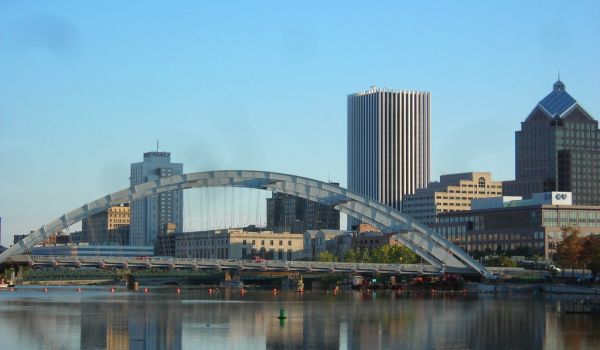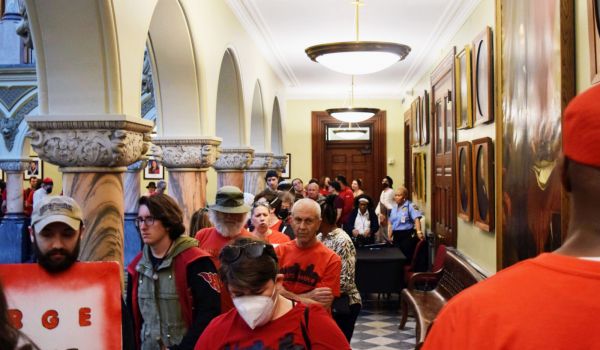When building something new that will affect lots of people for decades to come, it pays to ask people about what they want. It also pays to pay those people to tell you.
Rochester, a city of 100,000 located 77 miles southeast of Minneapolis and home to the Mayo Clinic, is facing growing pains. Downtown parking is in short supply, streets are congested, and it’s not always easy to get around without a car.
To alleviate parking and traffic congestion, the city’s transit agency is planning a bus rapid transit route, which will start near the Mayo Clinic and head west toward a planned park-and-ride near a suburban tract of single-family homes, stopping at a satellite Mayo Clinic campus and a small retail corridor along the way.
But to make sure that the project benefits those who will use it, the transit agency has convened a paid advisory committee made up of 10 Rochester residents to gather and provide feedback from all over the city. They are paid $25 per hour and offered childcare reimbursement, provided they commit to 30 hours of work between September 2020 and June of this year. They’re just one of many agencies across the nation who realize just how important it is to hear not just from those who typically appear at council meetings and hearings (who research shows tend to be older, whiter and wealthier than the overall neighborhood), but from people from different backgrounds who otherwise couldn’t afford to show up.
Paying participants for their time is important to Nick Lemmer, project manager for Rochester Public Transit. He tells Next City they wanted to “deliberately seek out communities whose voices aren’t often heard when undertaking a large project.” To get the word out about the committee, they reached a variety of organizations and used social media and a public service announcement that aired on local TV and radio stations and ran in their local daily newspaper. With 38 applicants, they selected a team of 10, who are mostly people of color representing all age groups, with at least two students and two immigrant participants.
Compensating community members is just a part of what is called the co-design process, where project managers get to know the people, their lived experiences, and their values, to devise solutions. “Just as if I would ask a professional consultant to spend their time with me, I wouldn’t expect them to show up for free or for a coffee card,” said Jess Roberts, Culture of Health By Design lead at the Minnesota Design Center in the University of Minnesota. Roberts worked with the City of Rochester on a different project several years ago.
Because committee members come from all walks of life and may not be familiar with what is being asked of them, the project team has two monthly meetings. In the first meeting of the month, the planning team introduces topics, such as station design principles and priorities for station, bus, and streetscape features. At the second meeting, co-designers share their own personal feedback and experiences, as well as from those around them. The planning team also hosts one on one check-ins to ensure co-designers feel supported.
And they do feel supported. “They do make sincere attempts at eliciting responses from us and it’s done in various ways, polls, voting, really, they do try to listen,” says Valerie Guimaraes, a nurse at the Mayo Clinic and one of the co-founders of Greater Rochester Area Dakota Supporters, a nonprofit organization that supports and educates the region about the local Dakota presence. Guimaraes doesn’t currently rely on Rochester’s transit system — saying it doesn’t serve her needs — but many of her patients and people she knows in the community do. She says she got involved because she wanted to connect her community with the project’s planning process.
Ideas the committee members recommended include having a cafe and restroom at the park-and-ride, as well as chargers for electric wheelchairs. Sylwia Bujak, another committee participant and the executive director of Rochester active-living organization 125 Live, links the cafe to her experiences riding public transit in Europe, and to safety. “[The riders] have to feel safe at the west lot, especially in the early morning. The [kiosk worker] can keep the toilet clean and [also] pay attention to what is happening,” says Bujak.
Neither the city nor the consulting firm working on the project collected demographics about the participants, who are technically subcontractors, erroneously citing state and federal law. (The Equal Employment Opportunity Commission allows employers to collect demographic information for legitimate business needs, such as to track applicant flow, and the Minnesota Department of Human Rights, which enforces the Minnesota Human Rights Act, actually encourages employers and contractors to gather demographic information to prevent discrimination). Bujak self-identifies as a Polish immigrant, and Guimaraes self-identifies as a Native American of Ho-Chunk and Dakota descent.
Agencies that want to do this work need to think carefully about how they engage with community members. The Minnesota Department of Transportation hasn’t compensated a single community member for their time in the planning process since 2019. They used to hand out gift cards at certain meetings, but have since enacted a moratorium because of questions from their staff about when it was appropriate to compensate, and who that compensation was going to.
Philip Schaffner, director of statewide planning for MnDOT’s Office of Transportation Systems Management, is part of an agency group working to develop consistent guidelines, which the group hopes to finish this year. It’s important to Schaffner to have these guidelines so they can be sure they are compensating people from marginalized backgrounds who are participating in the planning process. “[Some people may] have lots going on, may be working more than one job and have kids. [They are] persons who are very important for us to hear from,” says Schaffner. For now, they invite members of the public to suggest ideas through their agency’s website.

H. Jiahong Pan 潘嘉宏 (pronouns: they/them/佢/他) is a Minneapolis-based introverted freelance journalist who reports primarily on their lifelong passion: transportation issues. Find them on a bus of all types, the sidewalk, bike lane, hiking trail or perhaps the occasional carshare vehicle, camera and perhaps watercolor set or mushroom brush in tow, in your community or state or regional park regardless of season. If you can’t find them, they’re probably cooking, writing, curating an archive of wall art or brochures, playing board games, sewing or cuddling with their cat.













